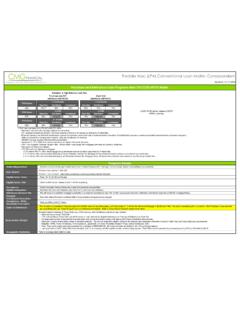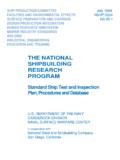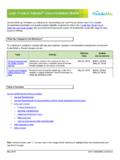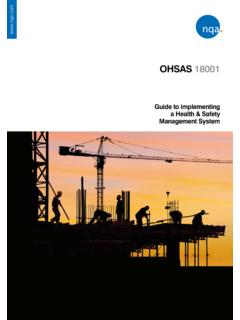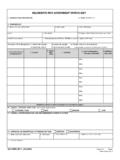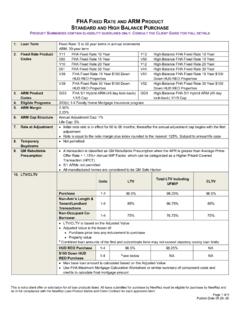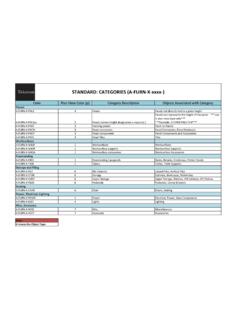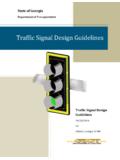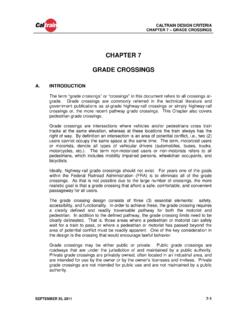Transcription of Robotic Arm RFP Final Report - alvinchung.weebly.com
1 Robotic Arm RFP Final Report GROUP 23 Kelly Chen - z3417781 Alvin Chung - z3463320 Don Dambagolla Arachchige - z3461017 Daniel Ianson Zhu - z3463670 Jason Koong - z3414694 Kelvin Tong - z3462445 MMAN2100 THE UNIVERSITY OF NEW SOUTH WALES Last Edited: 02/11/14 Semester 2, 2014 Abstract This document provides an in-depth analysis of the Robotic arm display requested by the Australian Museum for their Ocean Explorers Exhibition.
2 After conducting widespread research, generating a variety of conceptual designs and verifying all requirements, a Final product was produced. This Report includes a detailed description of the Final design and its verification through several testing methods, mathematical analysis and budget examination. The design replicates the actions of Robotic arms used on board AUV s today as well as being fun, intuitive and engaging. Along with satisfying all the requirements requested by the client, the Final design ensures the highest level of safety and functionality to attain the most optimum solution. 1 Table of Contents Introduction.
3 5 Research .. 6 Research Overview .. 6 Environment .. 6 Materials .. 6 Existing Design Solutions .. 7 Types of Robotic Arms .. 7 Existing Underwater Robotic Arms .. 8 End Effectors .. 10 Actuators .. 11 Electric Servo Drives .. 12 Requirements .. 13 Requirements Overview .. 13 Requirements Table .. 13 Conceptual Design .. 15 Conceptual Overview .. 15 System 15 Concept Generation .. 15 Morphological matrix .. 16 Concept Analysis .. 17 Concept Design 1 .. 17 Concept Design 2 .. 18 Concept Design 3 .. 20 Concept Evaluation .. 22 Pugh Selection matrix .. 22 Final Design Recommendation.
4 25 Detailed Design .. 26 Detailed Overview .. 26 Architectural Overview .. 26 Functional Overview .. 27 User Overview .. 29 Detailed Descriptions of Subsystems .. 30 Material Properties .. 30 Robotic Arm .. 30 2 Actuators .. 32 End Effector .. 32 Water Tank .. 33 Receptacle .. 34 Water Pump .. 34 Interface .. 35 Simulations & Prototype Testing .. 36 Pick Up & Drop Test .. 36 Working Area Test .. 37 Dispersion Test .. 38 Sealing Test .. 39 Input/output Test .. 39 Impact Test .. 40 Testing schedule .. 41 Finite Elemental Analysis (FEA) .. 42 Pseudo Code .. 45 Budget Analysis .. 46 Manufacturing Plan.
5 48 Installation 49 Requirements Design Table .. 49 Gantt 52 Conclusion .. 54 Appendix .. 55 Appendix A - Force Calculations .. 55 Appendix B - Grippers .. 59 Appendix C - Materials .. 59 Appendix D - Actuators .. 59 Appendix E - Arm Calculations .. 60 Appendix F - Shear Calculations .. 64 Appendix G - Factor of Safety Calculations .. 65 Appendix H - Electric Servo Calculations .. 65 Appendix I - Arm Length Calculations .. 66 Appendix J - Engineering Drawings .. 68 Appendix K JGZ-125 End Effector Brochure .. 74 References .. 78 3 List of Figures Figure 1: Cartesian Robotic Arm .. 7 Figure 2: SCARA .. 7 Figure 3: Articulated Arm.
6 8 Figure 4: Schilling Robotics TITAN 4 .. 9 Figure 5: Kraft Electronics Predator Arm .. 9 Figure 6: Replica Arm Controller .. 9 Figure 7: SDM Hand .. 10 Figure 8: SDM Hand Cable & Pulley System .. 11 Figure 9: System Diagram .. 15 Figure 10: Articulated Arm .. 17 Figure 11: 3 Finger End Effector .. 17 Figure 12: Actuated Arm .. 18 Figure 13: 2 Finger End Effector .. 19 Figure 14: Cartesian Arm .. 20 Figure 15: Magnetic End Effector .. 20 Figure 16: Final Design .. 25 Figure 17: Architectural Overview .. 26 Figure 18: Ocean Explores Display .. 27 Figure 19: Functional Block Diagram .. 27 Figure 20: State 28 Figure 21: Flow Diagram.
7 29 Figure 22: Operational Diagram .. 31 Figure 23: Robotic Arm Design .. 31 Figure 24: JGZ-125 Gripper .. 33 Figure 25: Receptacle .. 34 Figure 26: Ozito Water Pump .. 34 Figure 27: Interface Top View Layout .. 35 Figure 28: Interface Side View Layout .. 36 Figure 29: Testing Schedule .. 41 4 List of Tables Table 1: Existing Manipulator Arm Design Specifications .. 8 Table 2: Requirements Key .. 13 Table 3: End Effector Requirements Table .. 13 Table 4: Arm Requirements Table .. 13 Table 5: Receptacle Requirements Table .. 14 Table 6: Water Tank Requirements Table .. 14 Table 7: Interface Requirements Table .. 14 Table 8: General Requirements 14 Table 9: Pugh Selection matrix for Manipulator Arm.
8 22 Table 10: Aluminium Alloy 2024 Properties .. 30 Table 11: Type 304 Stainless Steel Properties .. 30 Table 12: Working Area Test Cost .. 37 Table 13: Dispersion Test Cost .. 38 Table 14: Requirements Traceability matrix .. 41 Table 15: Cost Analysis .. 47 Table 16: Bill of Materials .. 47 Table 17: Requirements Design Key .. 49 Table 18: End Effector Design Table .. 49 Table 19: Arm Design Table .. 50 Table 20: Receptacle Design Table .. 50 Table 21: Water Tank Design Table .. 50 Table 22: Interface Design Table .. 51 Table 23: General Design Table .. 51 5 Introduction A design for a Robotic arm display was requested by the Australian Museum for an upcoming exhibition called "Ocean Explorers".
9 The fun and interactive display is designed to educate children about manipulator arms used on board autonomous underwater vehicles of today. The children will use the arm to pick up specimens in the shape of fish or other sea creatures and place them into a receptacle. The arm must also have the following attributes 1. Be able to move left to right and up and down 2. Safely isolated so that no harm can come to the children/operator 3. Fit in a box 4. Have a working area of less than 1mx1m 5. Require minimal effort for the museum to install 6. Complies with all relevant safety requirements Along with the functioning Robotic arm, the display must also consist of a receptacle which can eject the specimens back into the working area randomly.
10 The design must also be rugged and be able to withstand a large amount of abuse to account for the possibility of children hitting and bumping into the exhibit. To achieve the Final design, a design process was followed, starting with research into types of Robotic arms, end effectors, actuators and the materials required for prolong underwater use. This research was then used to create a list of requirement specifications. In order to achieve the most optimal design solution, the Final design is required to meet the list of client, safety, functional and environmental requirements. A variety of conceptual designs based of these requirements were created using a morphological matrix .
